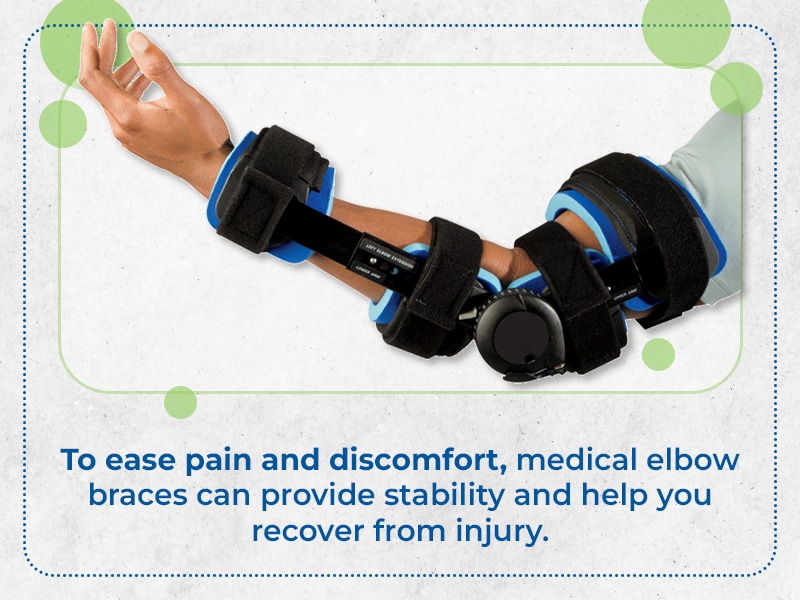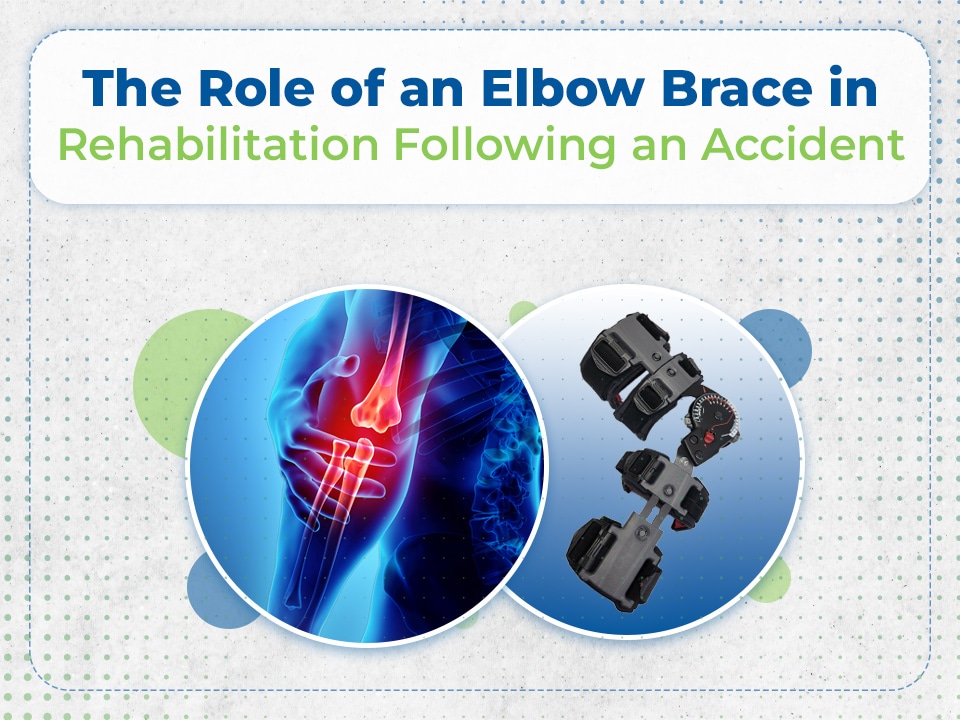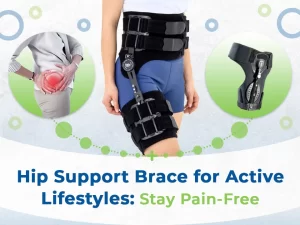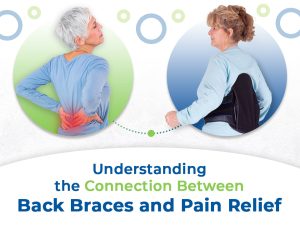Injuries to the elbow joint can be incredibly painful and debilitating, leaving individuals unable to perform daily tasks or engage in physical activities they once enjoyed. Elbow injuries can occur due to a variety of reasons, including accidents, sports injuries, or repetitive motions.
If you’ve recently experienced an elbow injury, your doctor or physical therapist may recommend wearing an elbow brace during your recovery. In this article, we will explore the benefits of using an elbow brace in rehabilitation following an accident and how it can aid in the recovery process.
Why Wear an Elbow Brace?
An elbow brace is designed to support and protect the elbow joint during the healing process. When an injury occurs, the body initiates an inflammatory response to promote healing. This inflammation can lead to swelling, pain, and stiffness, making it difficult to move the elbow joint.
An elbow brace can help reduce inflammation and provide support to the injured joint. By limiting the range of motion, the brace can prevent further damage and promote healing. In addition, wearing an elbow brace can help prevent future injuries by providing additional support to the joint during physical activities.
Types of Elbow Braces
There are several types of elbow braces available, each designed to provide a specific level of support and protection. Your doctor or physical therapist can recommend the type of brace that is best suited for your injury and recovery needs.
1. Compression sleeves
Compression sleeves are made of a stretchy, breathable material that fits snugly around the elbow joint. They provide mild compression and support to the joint, helping to reduce swelling and pain.
2. Elbow sleeves
Elbow sleeves are similar to compression sleeves but provide additional support through the use of straps or splints. They are ideal for individuals recovering from mild to moderate elbow injuries.
3. Hinged braces
Hinged braces are designed for individuals with more severe elbow injuries or those recovering from surgery. They feature metal hinges that limit the range of motion and provide additional support to the joint.
4. Range-of-motion braces
Range-of-motion braces are used during the later stages of rehabilitation when the goal is to restore the full range of motion to the joint. These braces allow for controlled movement and can be adjusted to increase or decrease the range of motion as needed.
Benefits of Using an Elbow Brace in Rehabilitation

Benefits of Using an Elbow Brace in Rehabilitation
The road to recovery after an elbow injury can be challenging and often involves a period of rehabilitation. During this time, an elbow brace can be a valuable tool to aid in the recovery process. Elbow braces offer a range of benefits, including:
- Reduced pain and swelling: Elbow braces provide compression and support to the joint, reducing pain and swelling during the healing process.
- Improved range of motion: Depending on the type of elbow brace, it can help improve the range of motion in the joint by limiting movement and preventing further injury.
- Enhanced healing: Elbow braces can promote healing by providing the necessary support and protection to the joint during the recovery process.
- Injury prevention: Wearing an elbow brace during physical activities can help prevent future injuries by providing additional support to the joint.
- Improved performance: For athletes or individuals engaging in physical activities, wearing an elbow brace can improve performance by reducing pain and preventing injury.
Read More: Elbow Braces: A Solution for Elbow Ailments in Older Adults
When to Wear an Elbow Brace?
The timing of when to wear an elbow brace during rehabilitation will depend on the type of injury and the advice of your doctor or physical therapist. In general, you may need to wear your brace for several weeks or months following an injury, depending on the level of support you require.
It is important to follow your doctor’s advice regarding when to wear your elbow brace, as wearing it too little or too much can impede the healing process. Your doctor or physical therapist may also recommend specific exercises or stretches to perform while wearing the brace to aid in the recovery process.
How to Choose the Right Elbow Brace?
When choosing an elbow brace for rehabilitation following an accident, it is important to consider the level of support and the type of brace that will work best for you. There are several factors to consider when selecting an elbow brace, including the following:

How to Choose the Right Elbow Brace?
1. Level of Support
The level of support you need will depend on the severity of your injury and the stage of your rehabilitation. Your doctor or physical therapist can recommend the appropriate level of support for your elbow brace.
2. Type of Brace
There are several types of elbow braces available, including sleeves, straps, and hinged braces. Each type provides a different level of support and mobility, so it is important to choose the type that will best meet your needs.
3. Material
Elbow braces can be made from a variety of materials, including neoprene, nylon, and elastic. Consider the material when selecting an elbow brace, as some materials may be more comfortable or durable than others.
4. Fit
It is important to select an elbow brace that fits properly and comfortably. A brace that is too tight can restrict movement and cause discomfort, while a brace that is too loose may not provide the necessary support.
5. Brand
Choose a reputable brand when selecting an elbow brace. Look for reviews and recommendations from other individuals who have used the same type of brace.
How to Wear an Elbow Brace?
Properly wearing an elbow brace is essential to ensuring that it provides the required support and protection to your joint. Here are some tips to help you wear your elbow brace effectively:
- Read the Instructions: When you receive your elbow brace, read the instructions carefully. Each elbow brace is designed differently, so it is essential to know how to put it on correctly.
- Adjust the Straps or Hinges: Once you have read the instructions, adjust the straps or hinges as required to ensure a comfortable and secure fit. The elbow brace should feel snug but not too tight.
- Wear it Consistently: Make sure you wear your elbow brace consistently, especially during activities that may cause strain or injury to your elbow joint. Your doctor or physical therapist may recommend wearing it for a certain amount of time each day or during specific activities.
- Remove for Cleaning: Make sure to remove your elbow brace for cleaning regularly. Sweat and dirt can accumulate under the brace, leading to skin irritation or infection. Follow the care instructions provided with your elbow brace for proper cleaning and maintenance.
- Monitor Your Progress: Keep track of your progress while wearing the elbow brace. If you notice any discomfort or pain, talk to your doctor or physical therapist. They may need to adjust the brace or suggest a different type of brace.
By following these tips, you can ensure that you wear your elbow brace properly and get the maximum benefits during your rehabilitation.
Precautions When Using an Elbow Brace
While elbow braces can be beneficial in rehabilitation following an accident, there are some precautions to keep in mind.
- Avoid wearing your elbow brace for extended periods of time without taking breaks to allow your skin to breathe.
- Do not wear your elbow brace too tightly, as this can restrict circulation and cause discomfort.
- If you experience any pain or discomfort while wearing your elbow brace, consult your doctor or physical therapist.
In Conclusion
An elbow brace can play an important role in rehabilitation following an accident. It can provide support, stability, and protection to the injured elbow, as well as help prevent further injury. When selecting an elbow brace, it is important to consider the level of support, type of brace, material, fit, and brand. Consulting with a doctor or physical therapist can help ensure that you select the appropriate elbow brace for your rehabilitation needs. With the proper use of an elbow brace, you can help speed up your recovery time and regain the full function of your elbow.
Our elbow braces are universal in size and feature multiple range-of-motion positions to offer comfort and support. If you’re not sure what product is right for you or if you’re eligible for insurance coverage, Artik Medical Supply will provide the guidance you need. We can even communicate with your doctor to determine the best wrist product for you. Contact us today to check for Medicare elbow brace coverage.
Article Key Phrases
- Importance of elbow brace in rehabilitation
- Elbow brace for injury recovery
- How elbow brace helps in post-accident recovery
- Using elbow brace for rehabilitation
- Role of elbow brace in accident recovery







